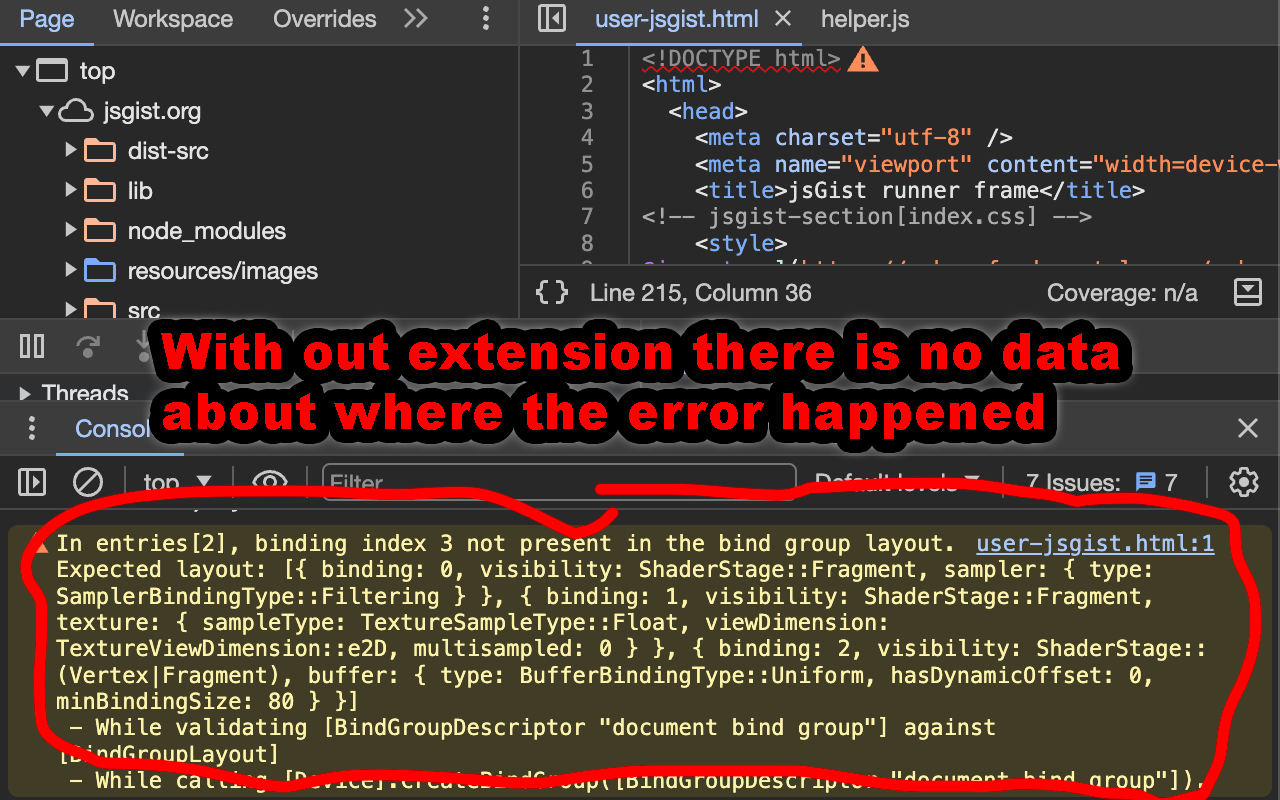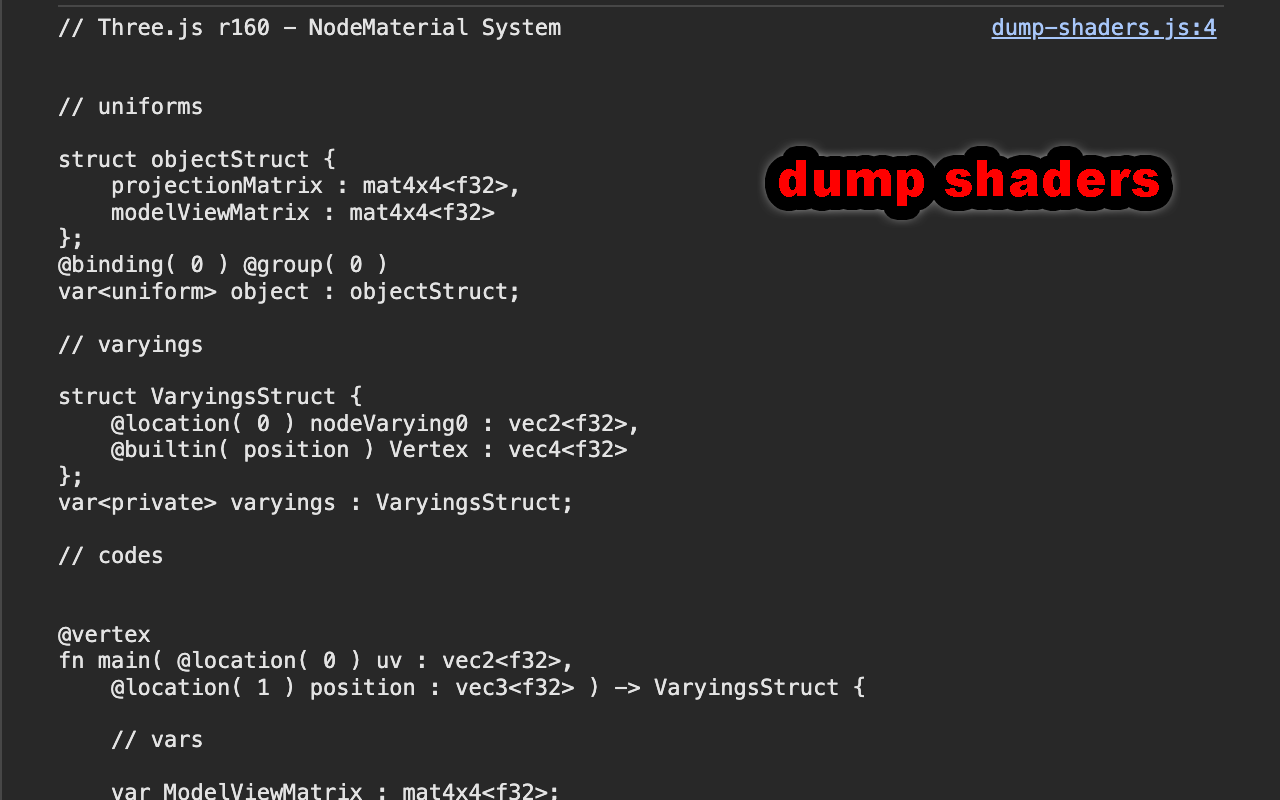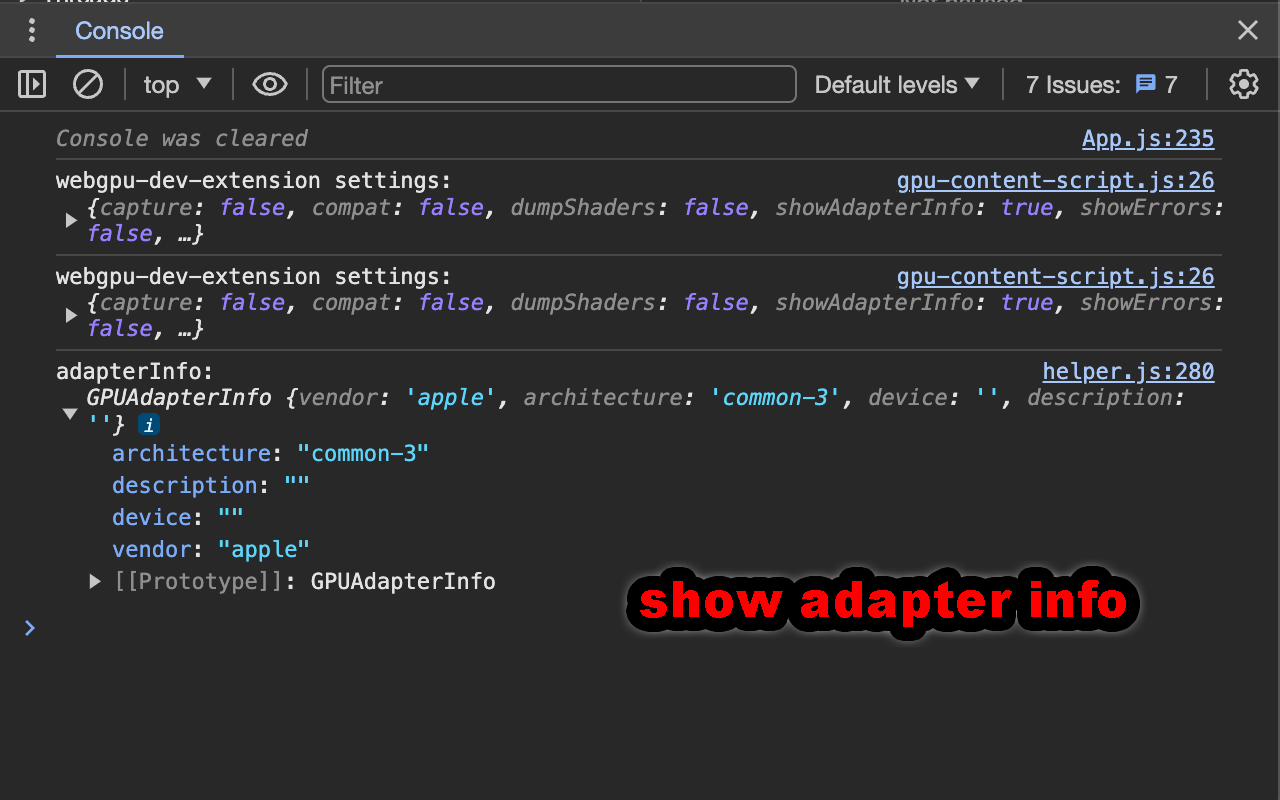This is an extension to help with WebGPU development
The latest published version is available here:
- Chrome
- [Firefox (TBD)]
- [Safari (TBD)]
Otherwise you can install top of tree locally by downloading or cloning this repo and then adding it as a developer. For example in Chrome
- go to
about://extensions - enable developer mode
- pick "Load Unpacked"
- Select the "extension" folder from this repo
This has 3 points
-
A WebGPU app can suppress errors by capturing them with
pushErrorScopeandpopErrorScopeas well as adding anuncapturederrorlistener to the device. Turning on this feature still prints the errors to the JavaScript console, even when they are captured. -
WebGPU errors happen asynchronously and so often do not provide info where the error happened. This is an attempt to add that info for some (but not all) errors.
-
The parameters of the function that caused the error are not always available. This is an attempt to include those parameters.
Adds the descriptors used to create many objects to those objects. For example:
When you call createView on a texture you pass in a descriptor. That descriptor is
not reflected in the view itself which can make it hard to see what's going on.
This adds that data onto the view so you can inspect it in the debugger or in the
error messages printed by "Show Errors". Similarly, bindGroups, bindGroupLayouts,
pipelines, pipelineLayouts, pass encoders, query sets, samplers, shader modules,
external textures, ...
Lets you choose one of 'none', 'low-power', 'high-performance', and 'compatibility-mode'
Dumps the pages shaders
Adds labels to objects that don't have them. So for example buffers will
get labels 'buffer1', 'buffer2', etc... which should help you tell
them apart in the debugger. Canvas textures, textures from getCurrentTexture,
are labelled "canvasTexture<num>[<id-of-html-element>]".
Shows the adapter info anytime requestAdapter is called. This is useful to see which GPU was
selected on a dual GPU computer.
Add a state property to a GPURenderPassEncoder, GPUComputePassEncoder and
GPURenderBundleEncoder that tracks the current pipeline, bindGroups, vertexBuffers,
indexBuffer, viewport, etc.... so you can inspect them in the debugger.
Shows GPUBuffer.usage and GPUTexture.usage with named bits as well as GPUAdapter.features and GPUDevice.features
- without this checked:
GPUTexture { ... usage: 6, ... } - with this checked:
GPUTexture { ... usage: 6 (COPY_DST|TEXTURE_BINDING), ... }
- without this checked:
GPUDevice.features - with this checked:
GPUDevice.features: ['shader-f16', 'timestamp-query', ...]
note: You must turn on custom formatters in the DevTools (Settings->Preferences->Console->Custom formatters).
Prints to the console the number of active WebGPU devices
Lets you block webgpu features. For example, type in shader-f16 and the shader-f16 feature will be blocked.
You can use this to test that your code, that is supposed to run without the feature, actually runs without the
feature.
Enter one or more features separated by space, comma, or new line. * is a wildcard so * = all, texture* =
all features that start with texture. *f16 = all features that end in f16.
Adds a debugger statement to the specified WebGPU API functions.
Enter one or more API method names separated by space, comma, or new line. * is a wildcard
so * = all. Each match is for whole string so
eg. *destroy adds breakpoints to GPUDevice.destroy, GPUBuffer.destroy,
GPUQuerySet.destroy and GPUTexture.destroy where as *fer.des* would only
add a breakpoint to GPUBuffer.destroy. Names are API.methodName so entering
copyTextureToBuffer matches nothing. Use *copyTextureToBuffer or the full name like
GPUCommandEncoder.copyTextureToBuffer.
In DevTools, for each breakpoint added there is a disable variable you can set to disable
the breakpoint for that particular API method.
Returns null from requestAdapter.
Removes navigator.gpu and other GPU classes
Experiment to show what places would fail in compatibility mode
Attempt to capture WebGPU calls to an HTML file using webgpu_recorder
I don't know all the procedures for other browser but in Chrome, load the extension by cloning this repo and then
- go to
about://extensions - enable developer mode
- pick "Load Unpacked"
- Select the "extension" folder from this repo
From there, most of JavaScript files that augment the WebGPU API are live. If you edit them, just re-loading the page using the extension
will pick the changes. For UI files, and for gpu-content-script.js, the script that injects the other scripts into your page, it
will only update when you pick the refresh button in about://extensions. The refresh button looks like a circular arrow ↺ inside
each individual extension's info.





